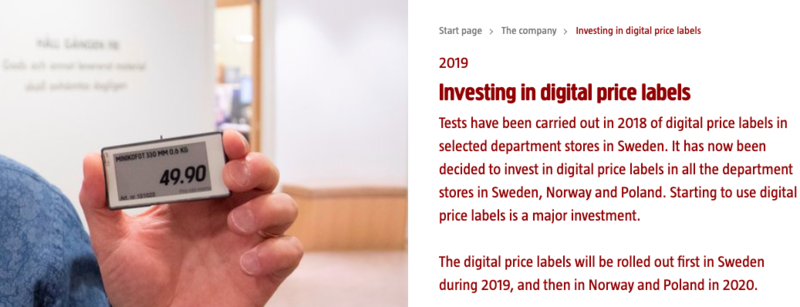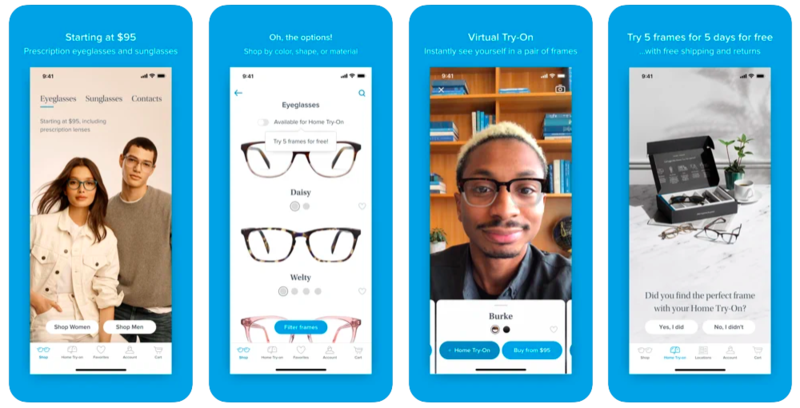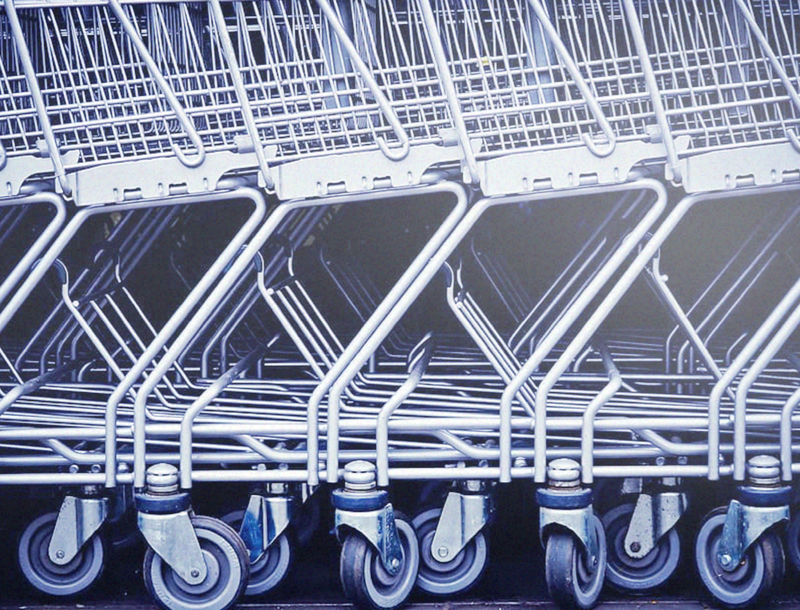They say that innovation in crisis times is important.
For retailers, it’s an understatement. Innovation has become a thing that stands between them and permanent closure. Customers are as health-conscious as ever, and they need companies to invest in retail technology that makes customer experience safer and equally engaging.
Sounds difficult, but not impossible.
In this post, we’re taking a look at four retail technology examples that make a difference for businesses in 2021. From helping to reduce costs and man-hours, they make the shopping experience safer and engaging.
1. In-Store Customer Analytics
Collecting in-store analytics is a process of gathering information about customers’ behavior inside a retail store. This information includes the number of visits per day, new and returning customers, traffic in different store areas, and the impact of different in-store ads on sales.
Benefits of monitoring analyzing customer movement in a physical store:
-
Better product placement — customer traffic through the store might reveal that certain areas attract more attention than others, which might give ideas for better product layout options
-
Better customer service — analytics might reveal that more customers visit the store on some specific days or time periods. Businesses use this data to ensure that more employees are available for the best possible customer experience and higher sales
-
Advertisement testing — businesses can display different advertisements in stores and track customer engagement to define their effect
Gathering in-store analytics is possible with several technologies.
The most common innovative retail technology examples are:
-
People counters — installed as a part of infrared anti-theft devices)
-
Real-time tracking tokens — devices attached to shopping carts, hand baskets, etc.
-
Camera tracking systems — advanced video surveillance systems that use AI to count people ad record movement throughout the day
Camera tracking is the most useful technology because it requires less effort and records tons of data. Retailers also use it to track employee movement to prevent safety accidents, enforce social distancing, and speed up employee allocation for new tasks.
2. QR Codes for Cashless Payments
QR codes are a technology that helps businesses make payments easier for customers. Dunkin’ Donuts, Starbucks, Walmart, Target, and many other retailers have applications that provide couponing, customer card management, and payments via QR technology.
Walmart, for example, has recently introduced contact-free payments, pickup, and delivery as a part of the plan to protect its employees and customers against COVID-19. The only requirement for paying at Walmart is to scan a QR code inside the Walmart Pay application.
Source: Walmart
Starbucks took the technology one step further.
The company’s customer app is useful both for making payments and earning “Starbucks stars” — loyalty points to exchange for free drinks. There are more features (listed below), which make the app a single point for communicating with the brand.

Source: Starbucks
The app was a huge success, as it was used to place nearly a quarter of all US retail orders. Customers loved it so much that they preferred it to Apple Pay and Google Pay.
That’s why many other retailers are investing in custom app development for a better customer experience. Having such an easy solution for quick payment and customer loyalty management is an excellent idea to improve the overall brand experience.
3. Electronic Shelf Labels
An electronic shelf label is an electronic version of a price tag, connected to a database. This technology in retail stores makes changing prices super easy, which saves hours of manual labor and thousands of dollars.
Behind the scenes, electronic shelf labels are connected to an app where store managers can change prices for any product at any time. Some software options also allow adding product characteristics to the price tag along with the cost.
Many retailers in all markets are now investing in technology. Jula, a Swedish retailer, has recently announced the implementation of digital price labels in all its stores in Sweden, Norway, and Poland.

Source: Jula
Electronic price tags can be an extremely useful retail technology.
Some benefits of using them include:
-
Dynamic pricing — a store manager can change prices for any product from one software dashboard. This ability is useful to adapt pricing to demand surge, sell out low inventory, match competitors’ prices, or make sales and promotions easier
-
Easier ordering — electronic price tags can be added with QR codes. A customer can scan a code to view and buy a product at an online store
-
Better customer experience — electronic price tags ensure accurate pricing regardless of the channel. Also, they can be equipped with customer ratings based on reviews from the company’s online store
-
Time and resource savings — employees no longer need to monitor, change, and print out new price tags after the installation of electronic shelf labels. This translates into major time and resource savings in the long-term.
The list of benefits expands all the time as this retail technology improves. One recent addition is quick product search for customers. Thanks to electronic labels, a company’s app can display a shelf number to help customers find the product faster while in-store.
4. Augmented Reality Shopping Apps
Shopping with augmented reality (AR) is becoming a popular feature among retailers. The idea is to use AR technology to allow customers to try products before buying. By doing so, retailers improve the shopping experience, encourage buying, and reduce returns.
The best thing about AR is the ability to help sell any products.
IKEA, for example, has an AR app called IKEA Place. The app allows trying IKEA’s products in customers’ homes to see if they fit the interior design, which could be super helpful for shoppers.
The app has a decent 4.6 rating on the App Store. Many customers seem to love the ability to try furniture without buying, so customer reviews like this one are abundant.

Source: App Store, IKEA Place
But furniture isn’t the only product category retailers are combining with eCommerce AR. Warby Parker, a well-known glasses seller, also uses AR to let customers try on products before buying.
This means customers can install the official iOS app, choose glasses, and see how they look on their faces. The visualization looks very realistic thanks to AR, which mimics unique facial features to produce a good appearance from different angles.

Source: App Store, Warby Parker official app
The Warby Parker’s app also received outstanding support from customers. This retail technology is super easy and fun to use, and helped to shop glasses without visiting a store. No surprise that the app has a 4.9-star rating on the App Store.
4 Best Retail Technology Examples in 2021: Summary
These four technologies have already proven their ability to engage customers, reduce costs, and make the shopping experience more positive and engaging. They also helped retailers cope with the ongoing COVID-19 pandemic and make shopping safer.
Using similar retail technologies should help companies stay more competitive in 2021 and beyond. Investing in at least some technologies is a worthwhile idea that can make a lot of difference in sales and reputation.

